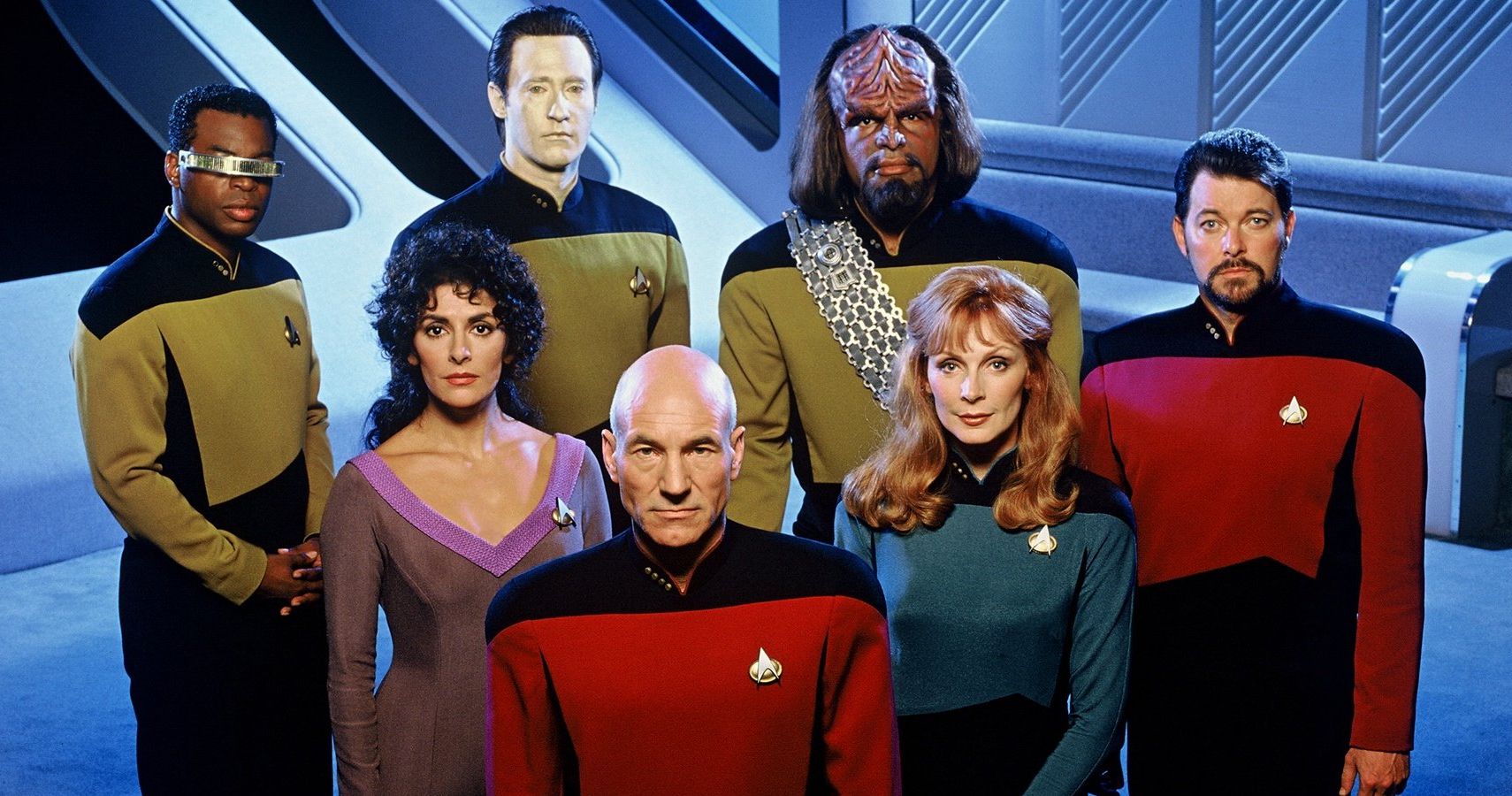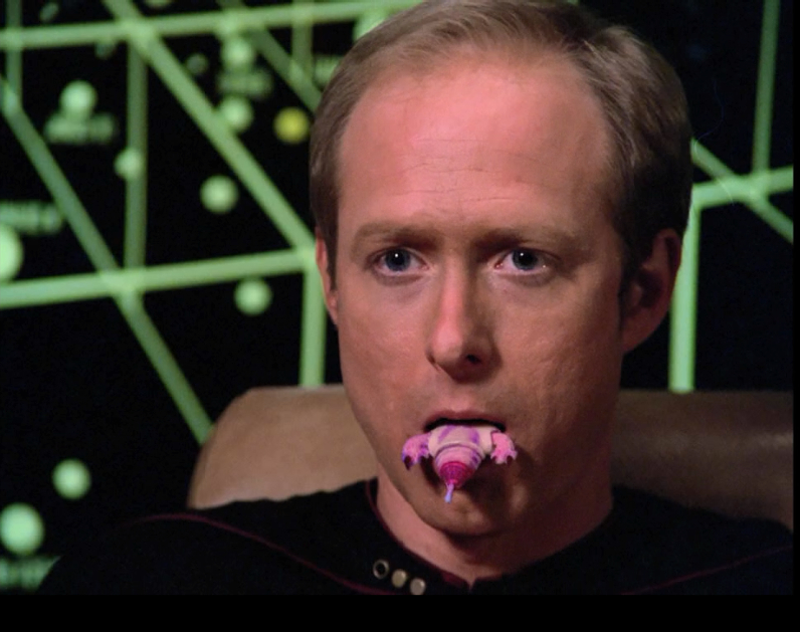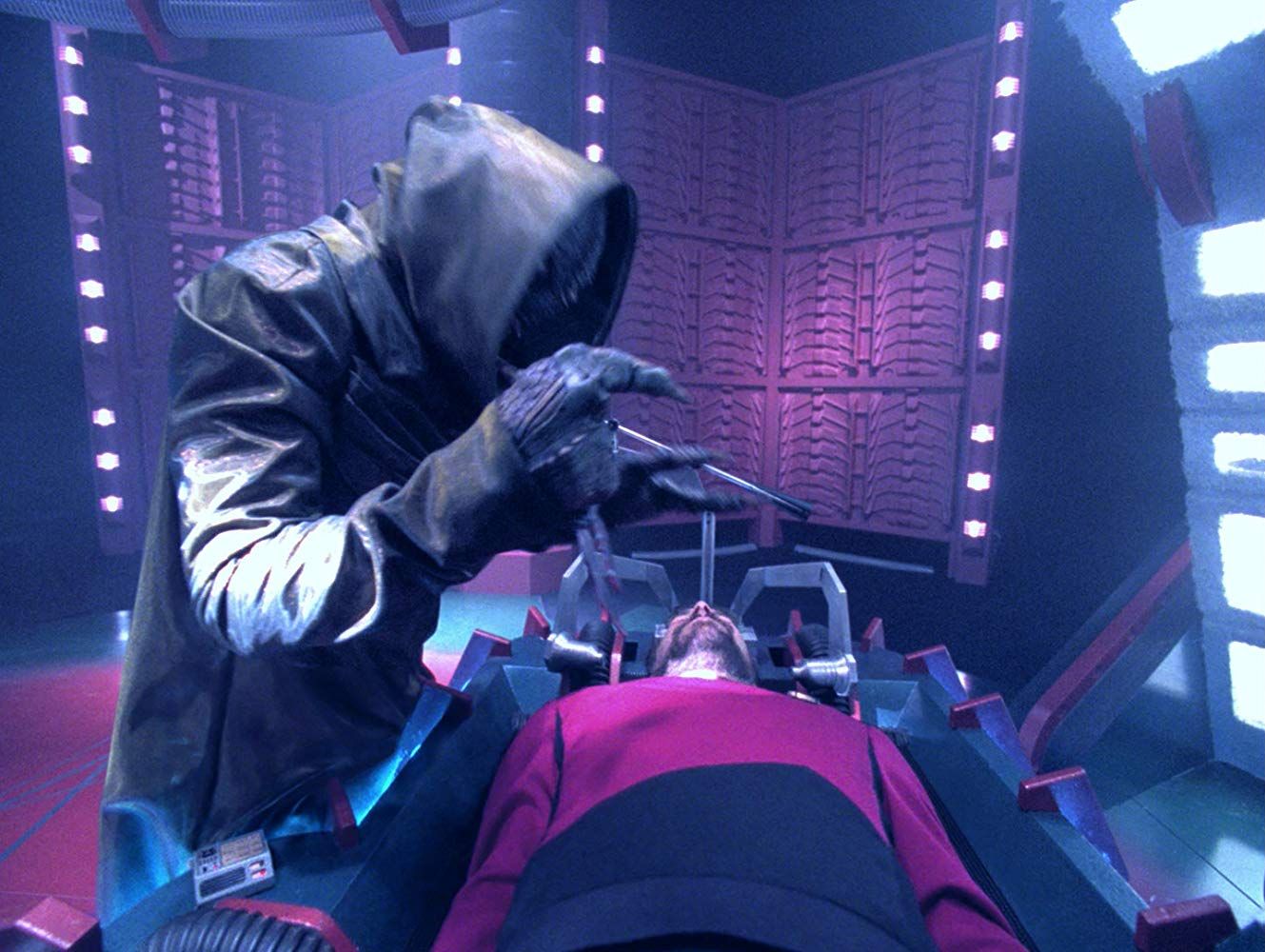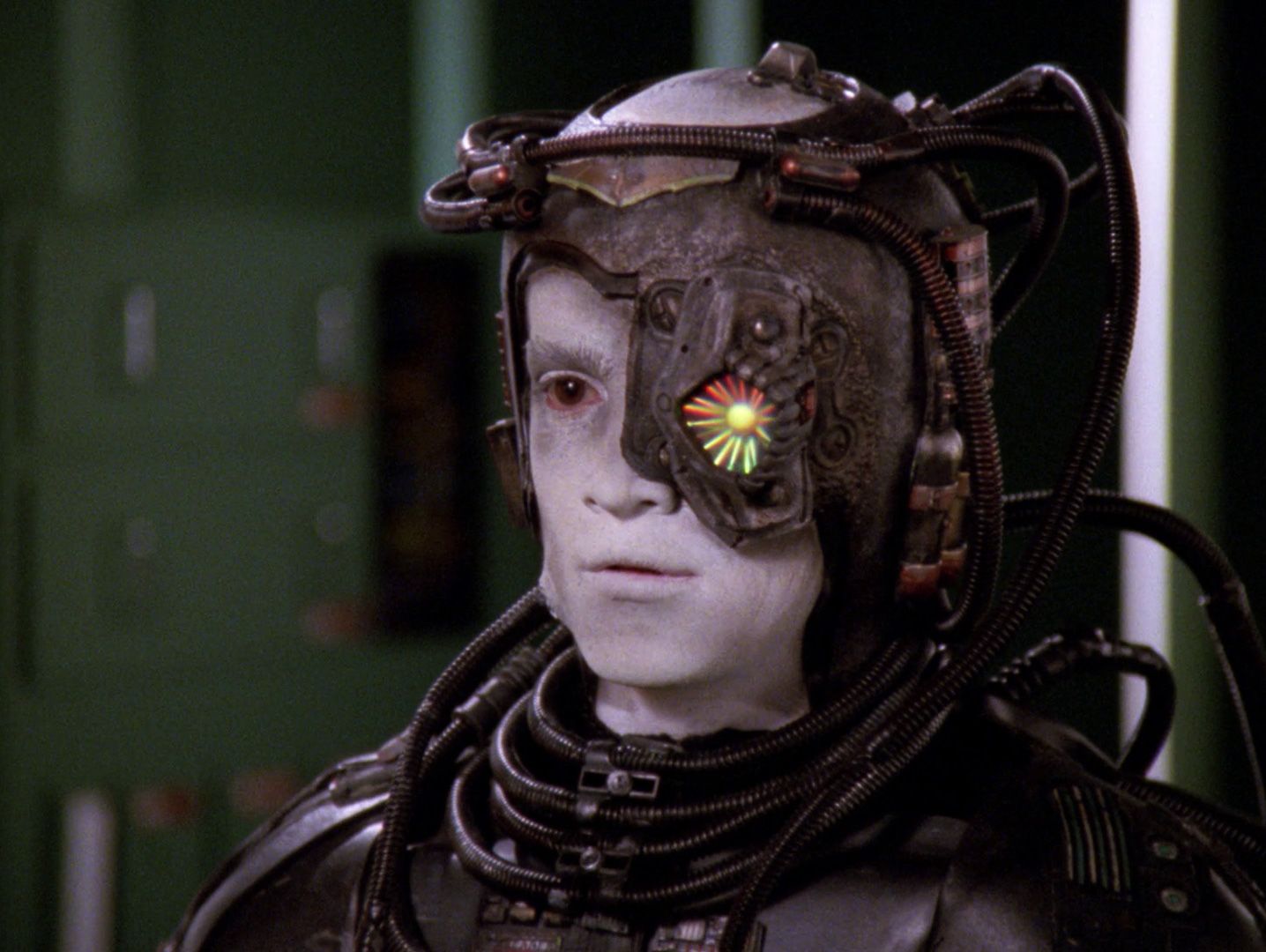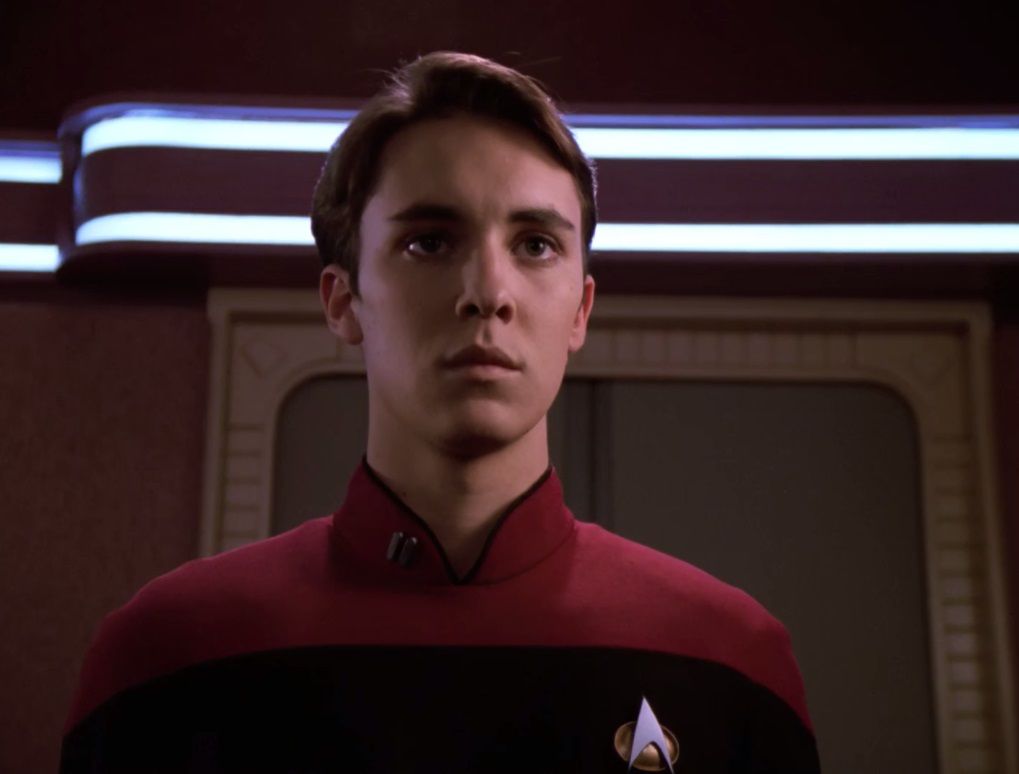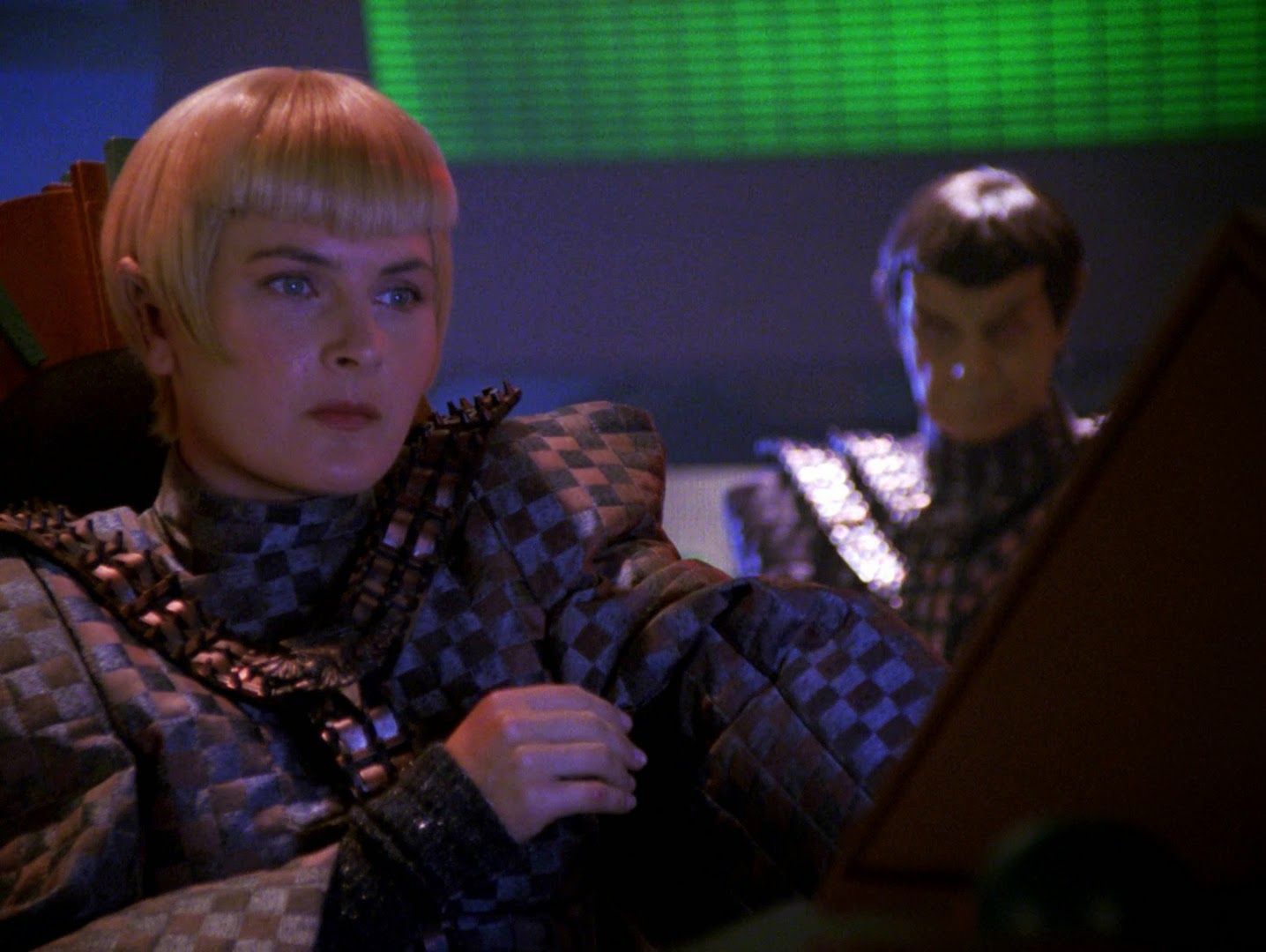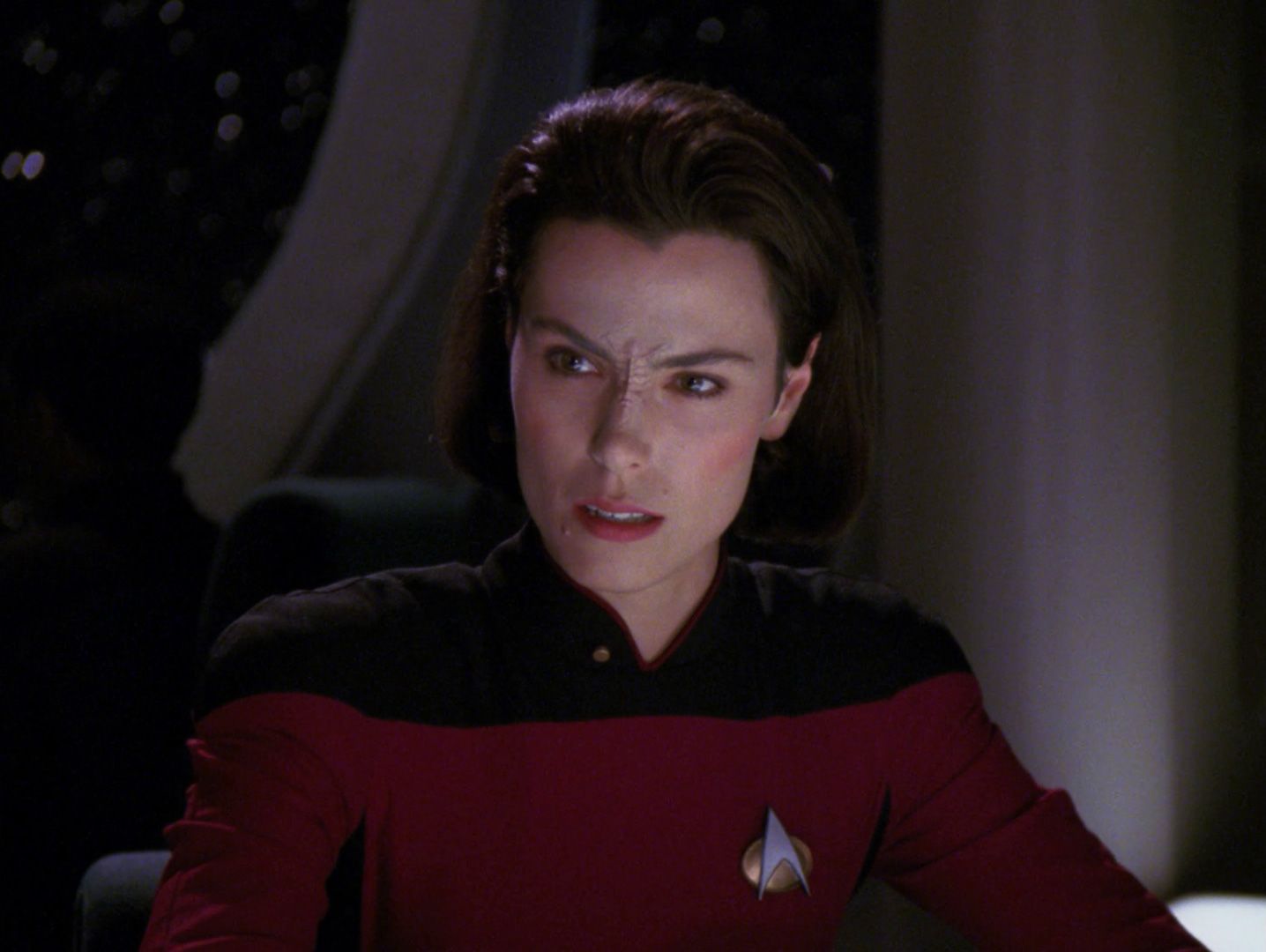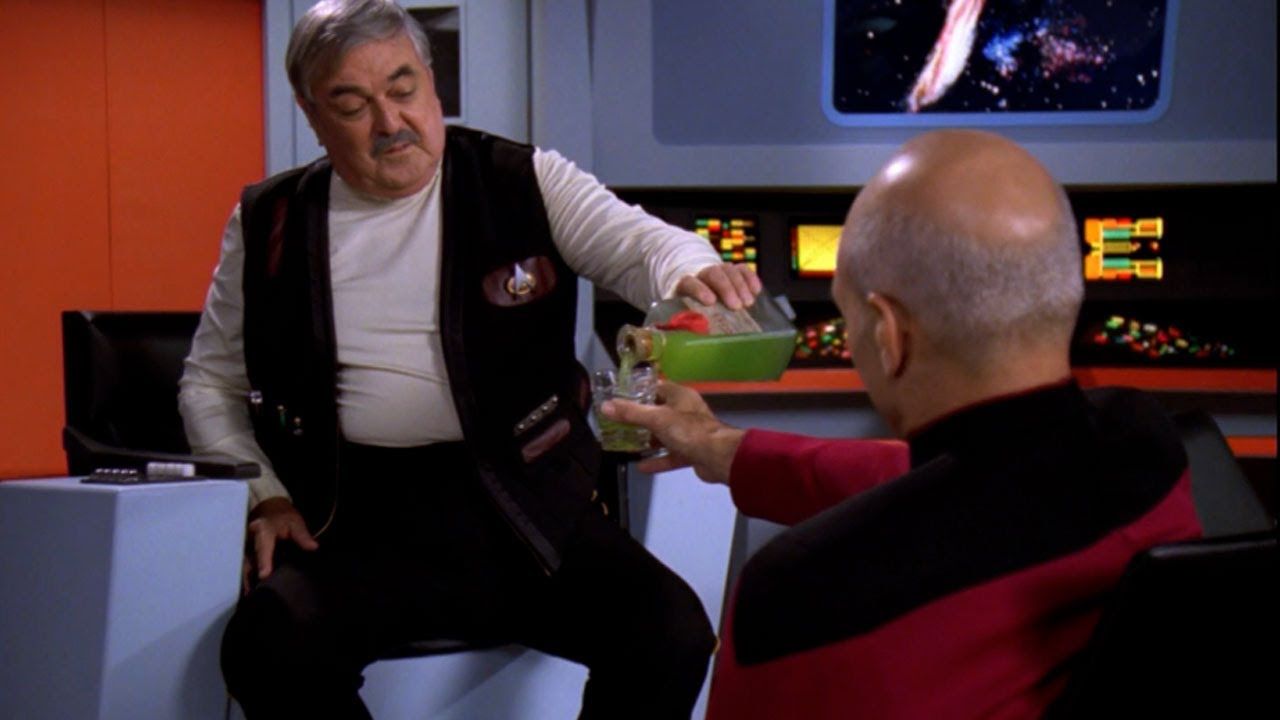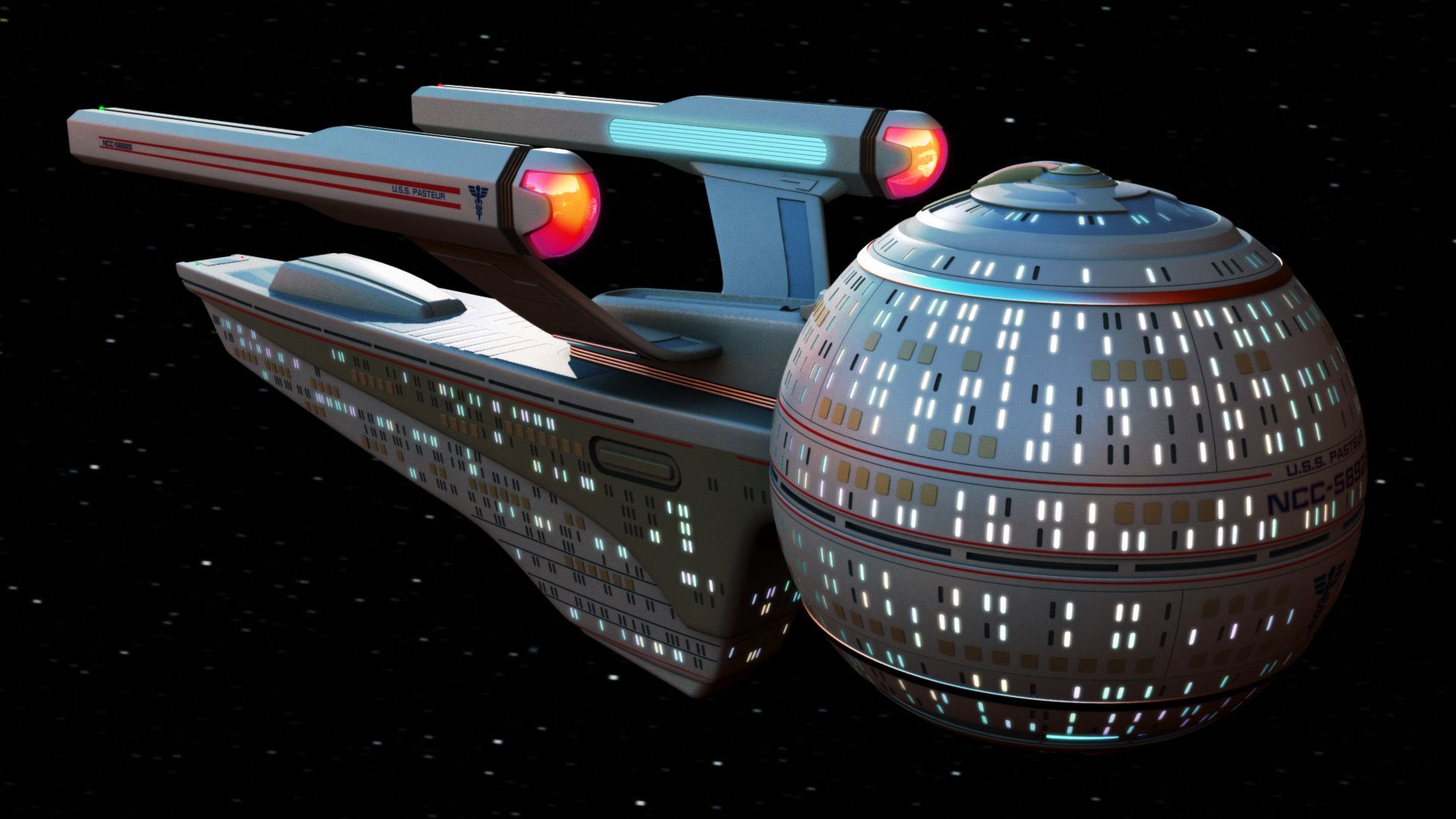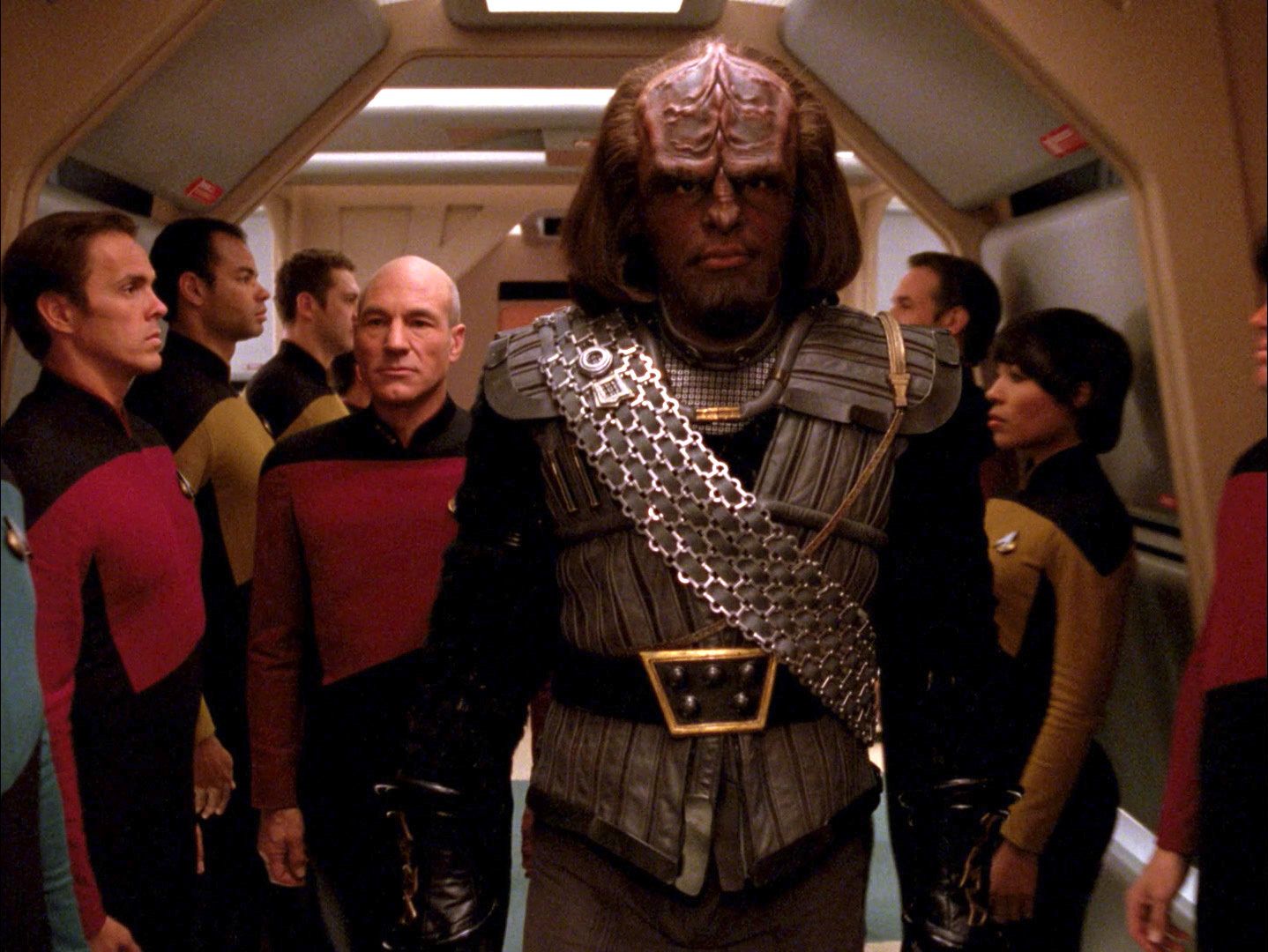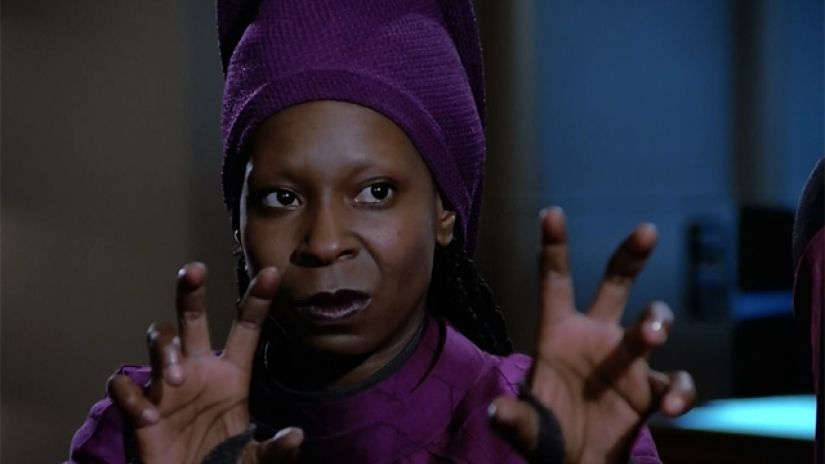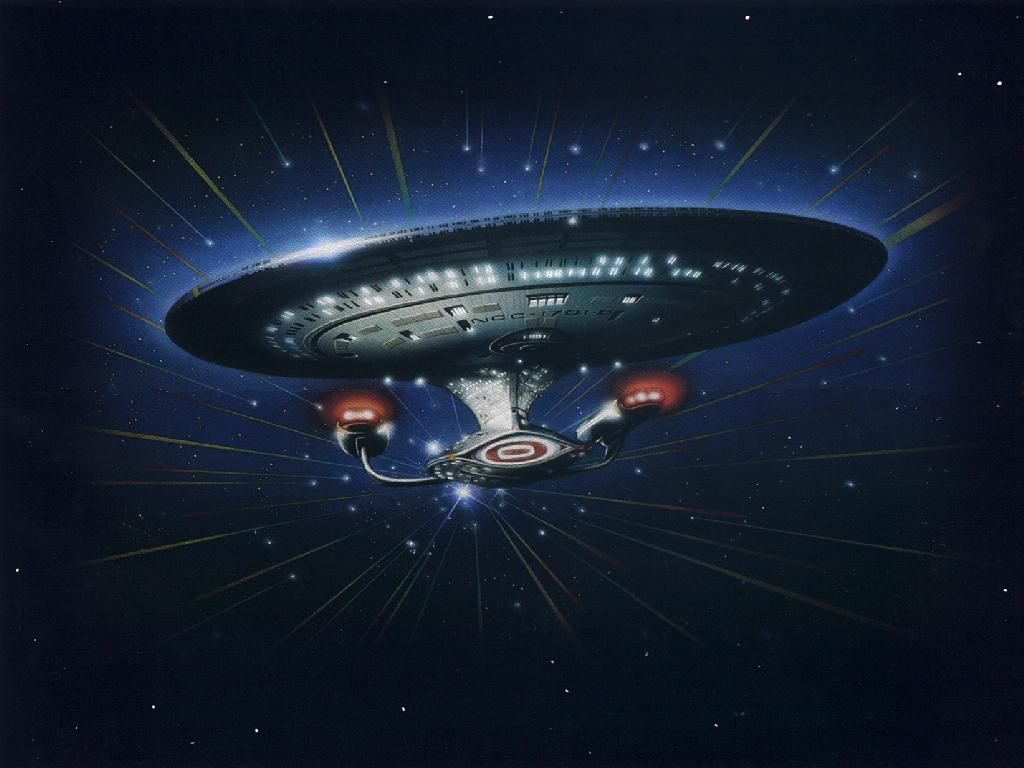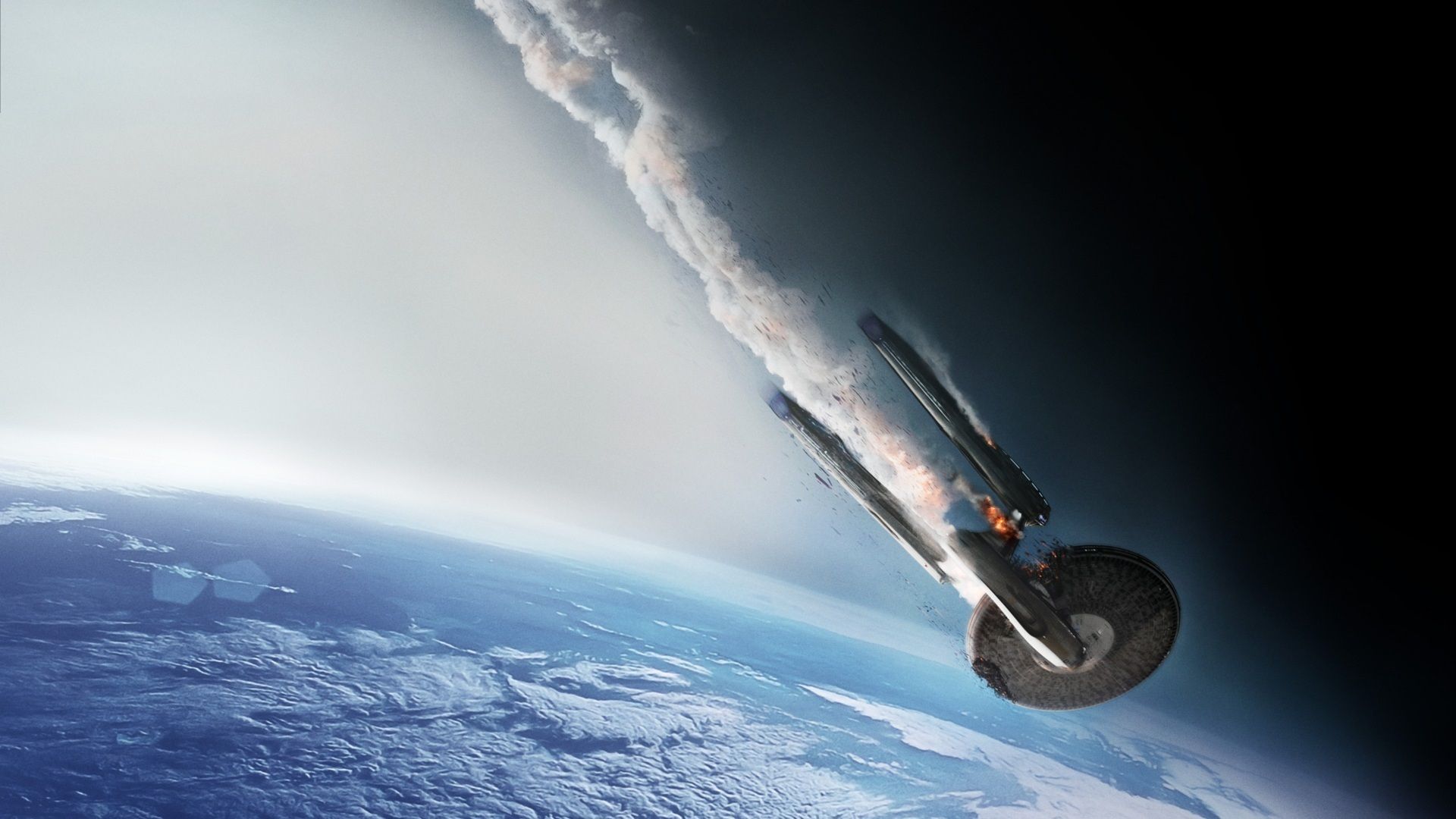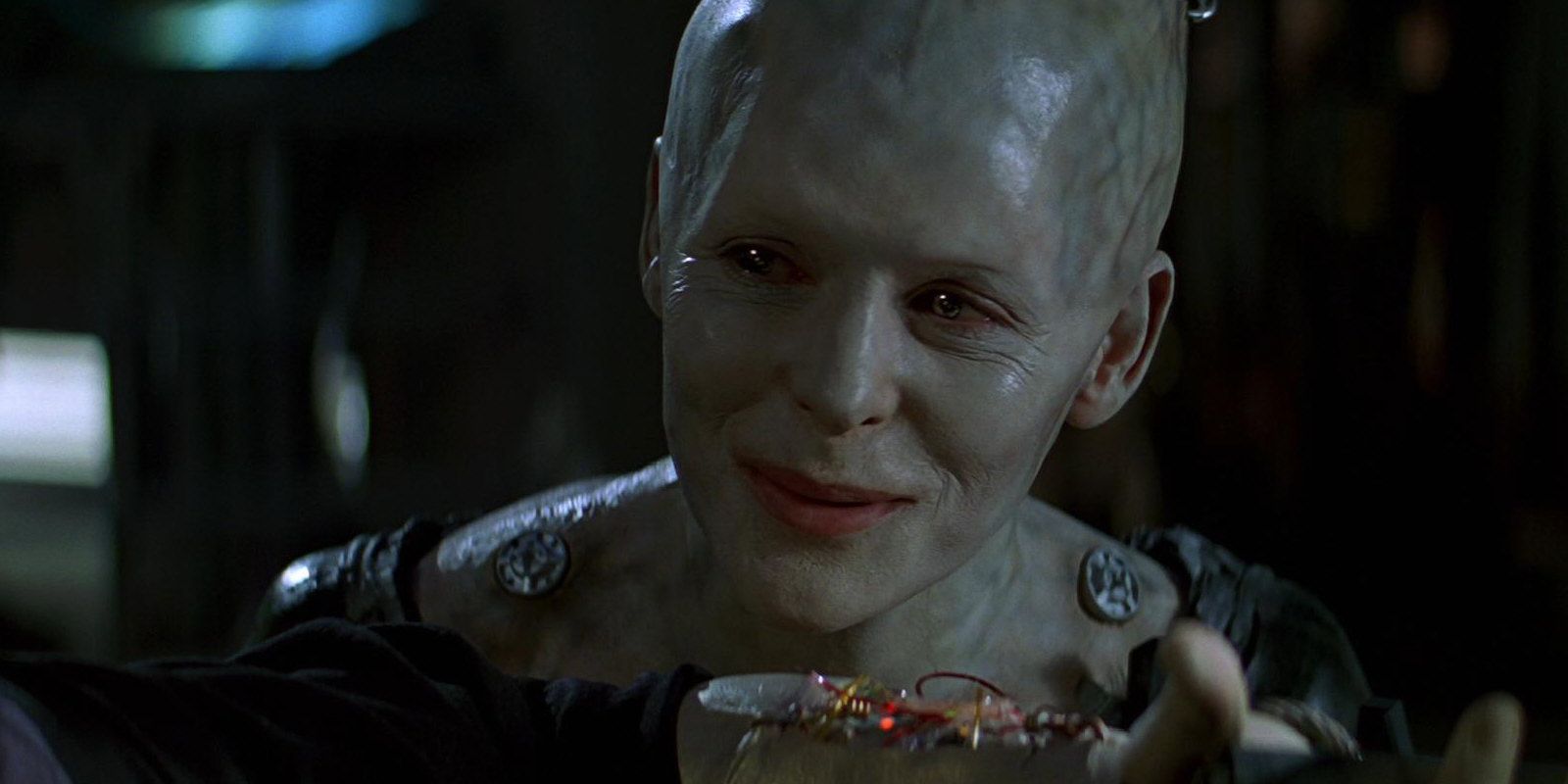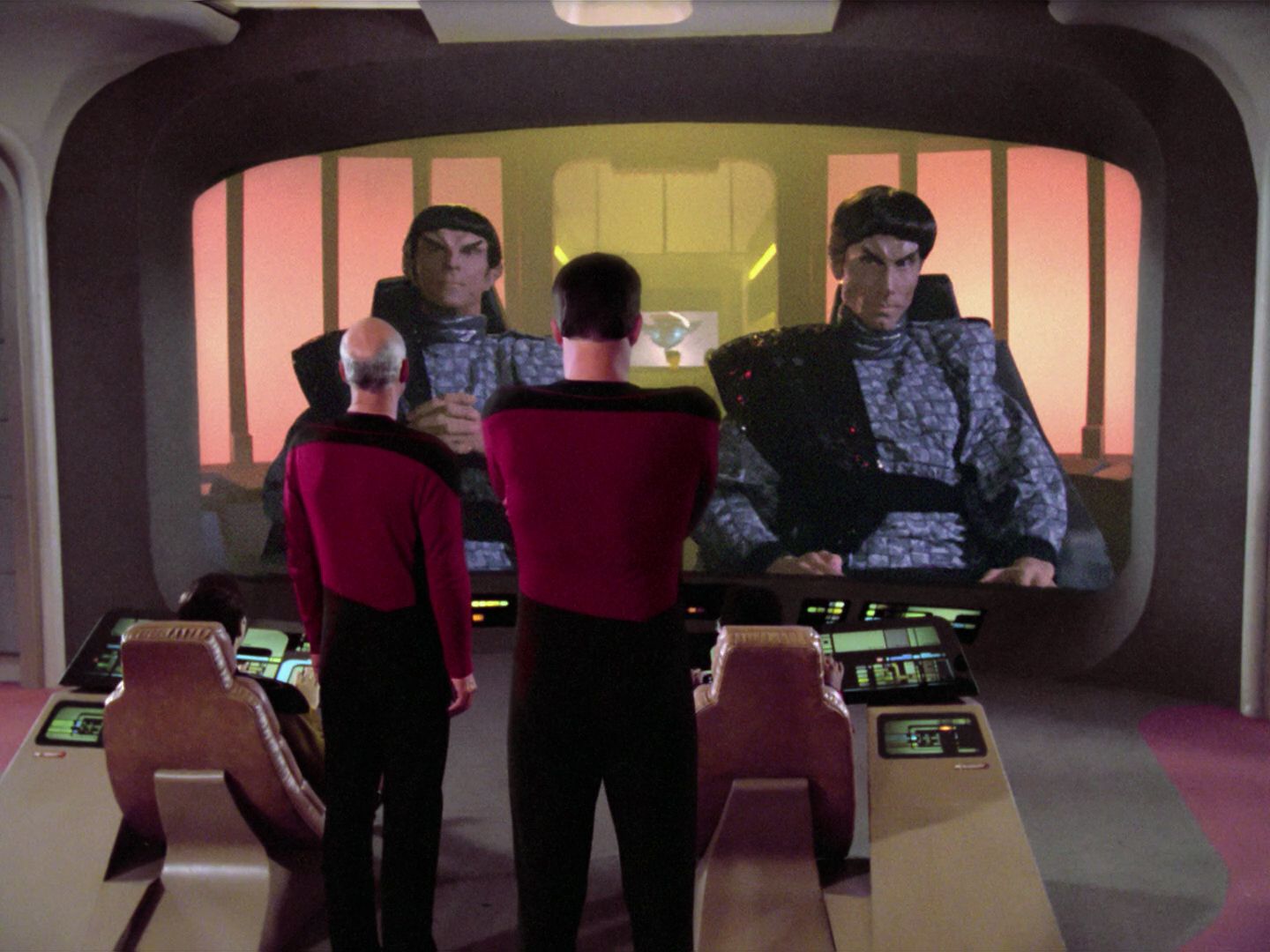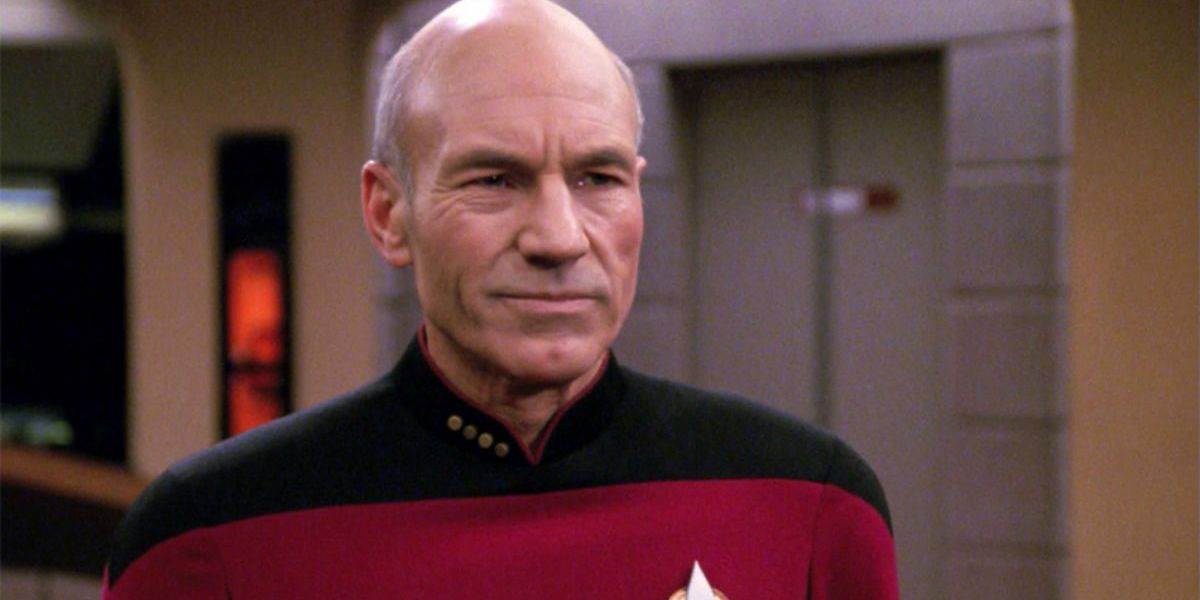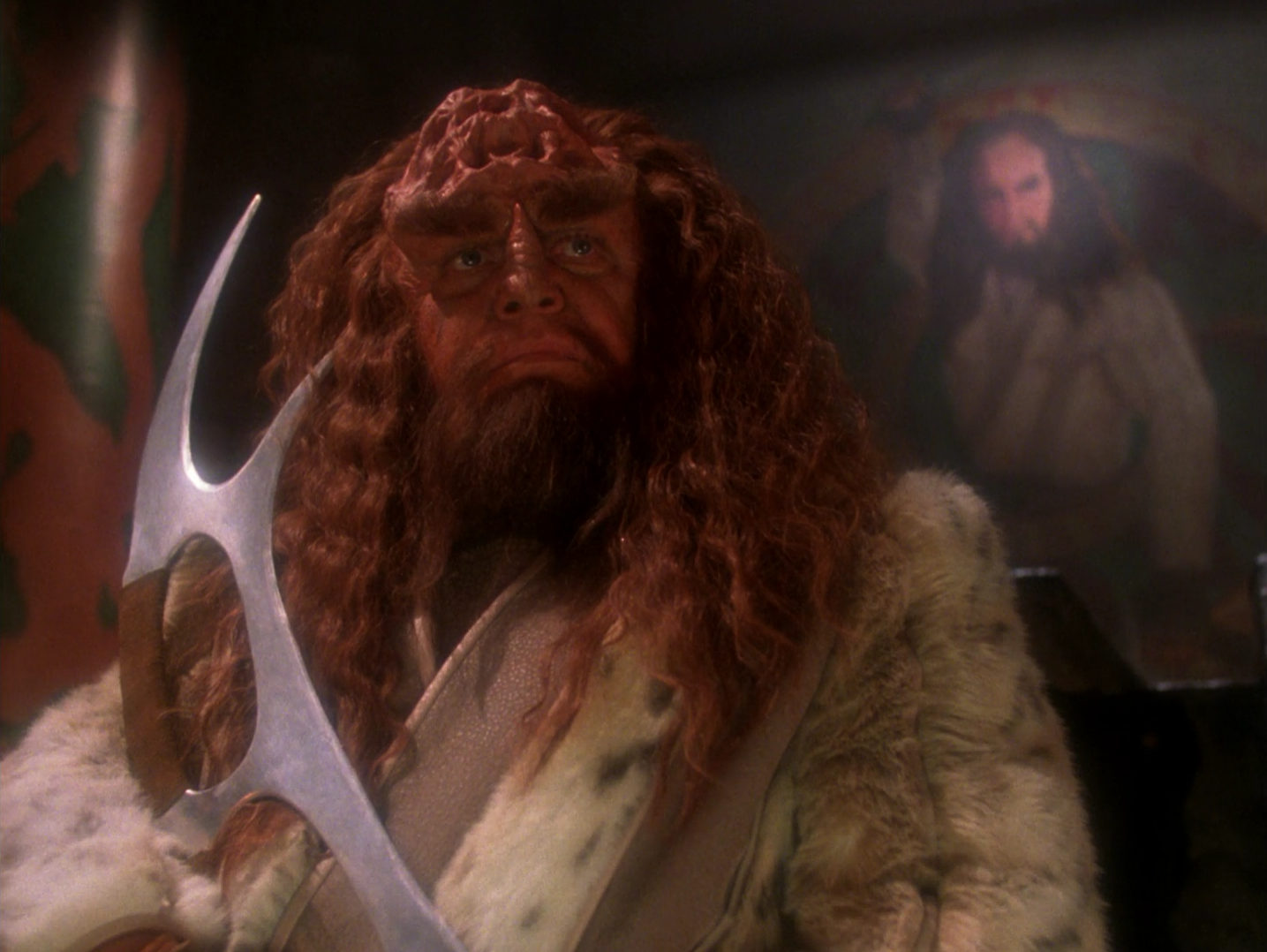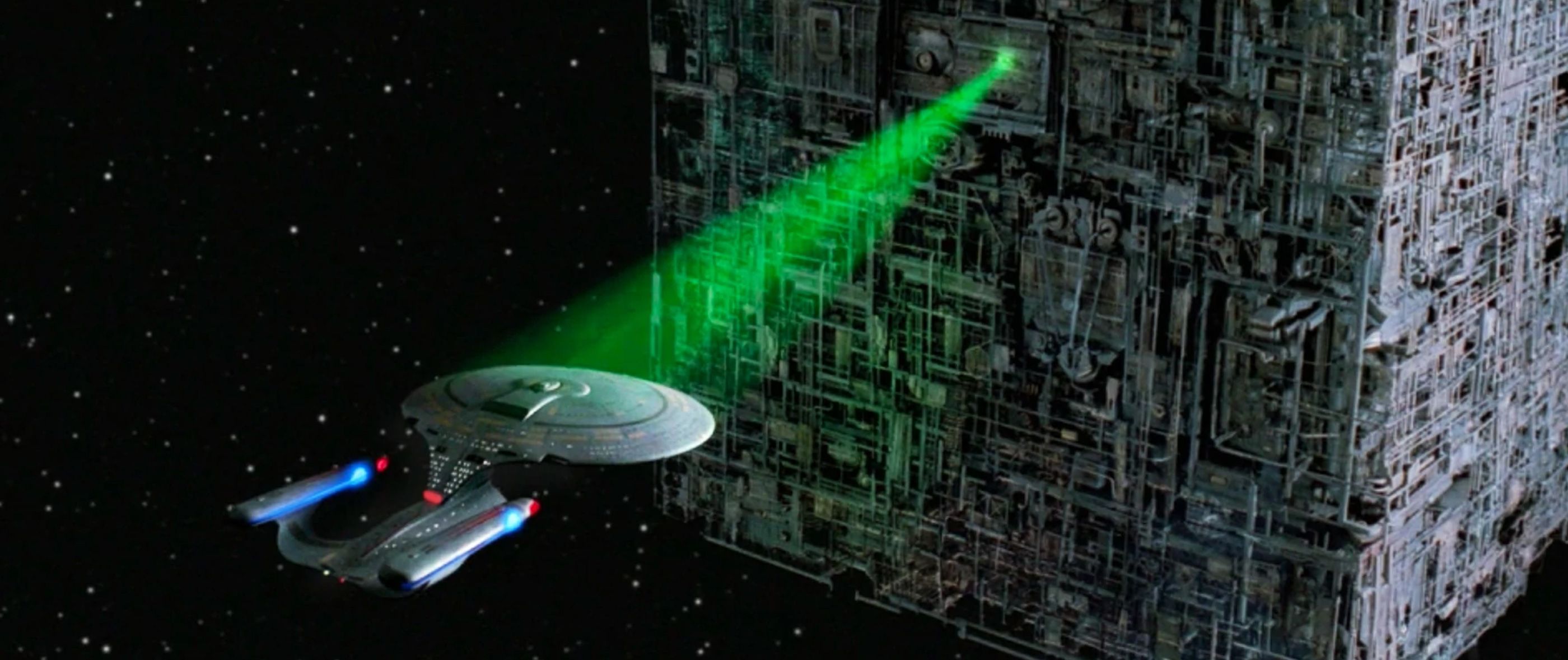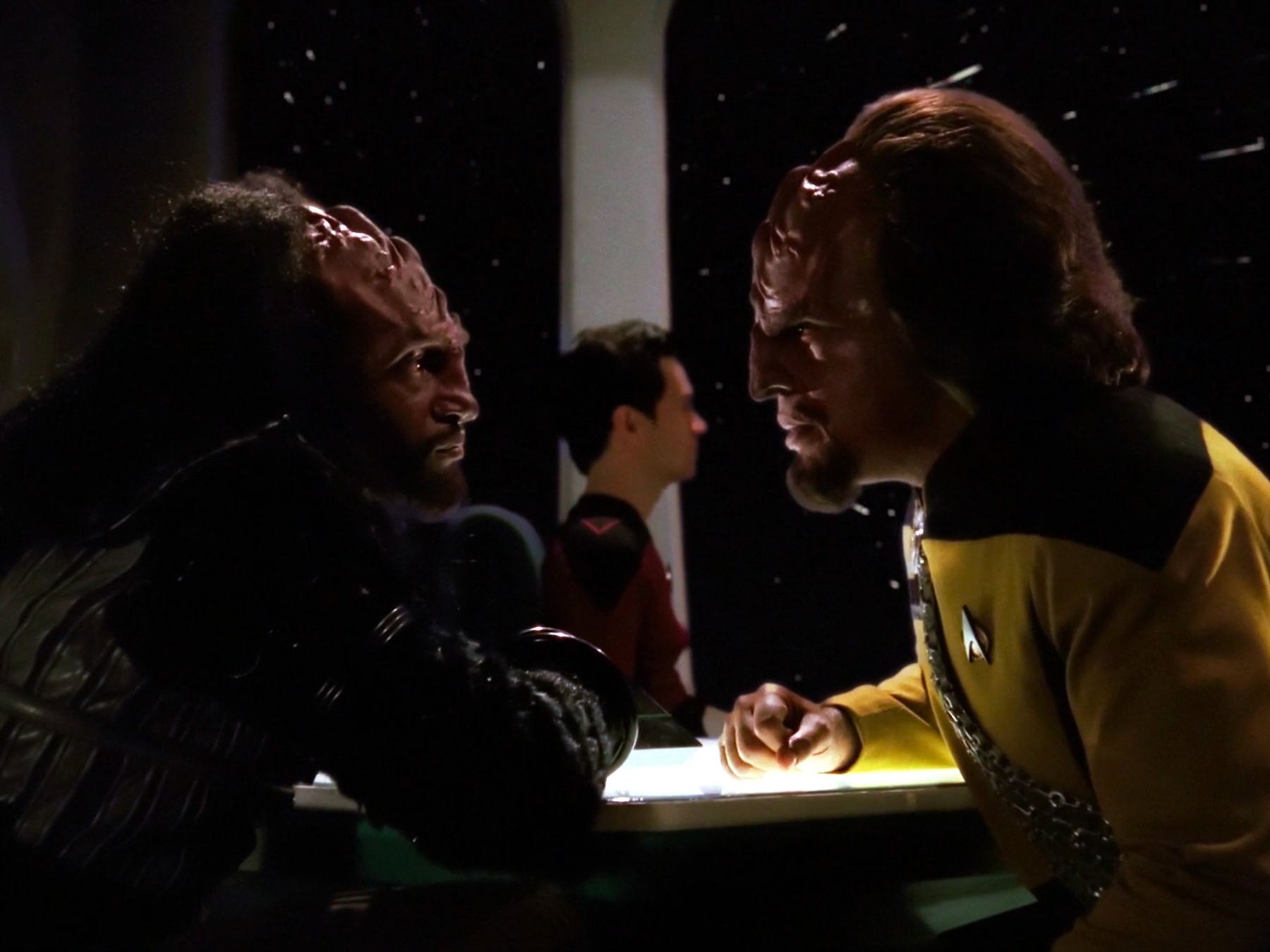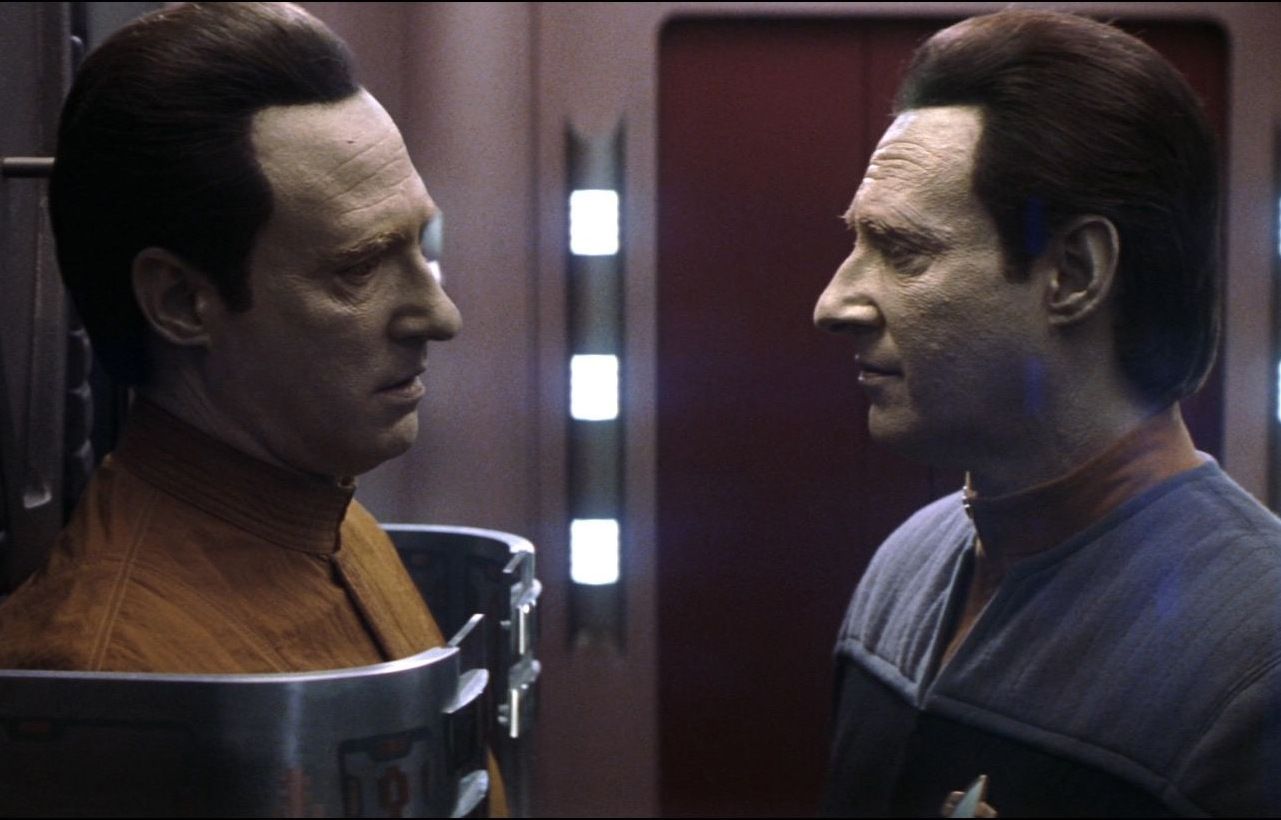Star Trek: The Next Generation is a classic of science fiction TV. Nobody doubts that. It not only successfully revived the Star Trek brand for a new era, but was also able to differentiate itself from its iconic predecessor. Episodes like "The Best of Both Worlds," "The Inner Light," and "The Measure of a Man" remain thoughtful and engaging stories to this day. Without The Next Generation, television viewers wouldn't have gotten other great sci-fi shows like Firefly, Lost, and the reboot of Battlestar Galactica. It was, and is, a great show.
But that doesn't mean it was always great. With seven seasons of 26 episodes each, not every story is going to be a home run. And with the episodic nature of television back in the 90s, it also meant that whole episodes could be devoted to new, intriguing ideas... that never get followed up on again. For a normal show, that wouldn't really matter. But this is Star Trek. Millions of Trekkers were going to be cataloging and annotating these episodes, looking for continuity hiccups and missed opportunities. And they're going to wonder about those dropped story threads.
Even now, 25 years after The Next Generation went off the air and three more Star Trek TV shows, there are still unanswered questions and dangling plots from Picard's Enterprise crew. Some are just continuity errors in need of a retcon. Others are whole stories left unfinished. Trekkers are still wondering about these 25 Unresolved Mysteries And Plot Holes The Next Generation Left Hanging.
25 The "Conspiracy" Aliens
"Conspiracy" was a highlight of TNG's first season. The plot involved Picard and crew uncovering a conspiracy (duh) of senior Starfleet officers whose minds were taken over by alien parasites planning to infiltrate the Federation covertly and conquer it from the inside. Our heroes put a stop to the conspiracy but it's revealed at the end that the parasites were able to send out a beacon to their homeworld, calling them to Earth. It was an ominous cliffhanger, hinting at the promise of a new foe, but the parasites never came back. A victim of the first season's changing writers.
24 The Aliens From "Schisms"
There a very few Star Trek aliens we know nothing about. Even the godlike beings get a bit of explanation. But that just makes the aliens from the episode "Schisms" all the stranger. Coming from another dimension, these aliens taken members of the Enterprise crew in their sleep and performing strange medical experiments on them.
They soon fled after our heroes discovered what was happening.
This episode was their first and last appearance, so we never learned the purpose of their experiments. Curiosity? Preparation for an invasion? We'll never know.
23 Hugh and the Free Borg
The Borg, arguably TNG's best villain, went through a lot of changes during their time. One of the more intriguing was the notion of Borg who regained their individuality outside of their collective consciousness.
The idea was in introduced in the episode "I, Borg".
The Enterprise discovers a Borg drone abandoned whose original personality slowly resurfaces. When Hugh, as they called him, returns to the Collective, they speculate if his new individuality will start to spread. This was revealed to be the case in a later episode, with Hugh starting his own Free Borg faction. But it was never shown on-screen, so we can only speculate about what good-guy Borg would be like.
22 Wesley Rejoins Starfleet
People hated Wesley Crusher so much, that it was cause for joy when he was written off the show. But his return to the franchise was even weirder. The last we saw Wesley was in the episode "Journey's End," where he joined the alien Traveller to meet his cosmic destiny... or something.
And yet next we saw Wesley in the movie Star Trek: Nemesis, he had rejoined Starfleet.
What happened to make Wesley give up his cosmic quest? Never explained, but that's probably for the best. The Traveller was rather skeevy.
21 Commander Sela
Commander Sela was presented as a big deal in her first story. The half-Romulan daughter of martyred crew member Tasha Yar, and played by fan-favorite Denise Crosby, Sela was poised to be the next major antagonist for Picard and crew. She was cunning, manipulative, and her parentage hit at the heart of one of the Enterprise crew's biggest failures. But despite the fanfare, the character was never really fleshed out. She was the villain of two pretty big two-parters, but kind of vanished after that. Even though Deep Space Nine and Nemesis involved Romulan schemes she would have been perfect for.
20 What Happened to Ensign Ro?
The Next Generation introduced new recurring characters pretty regularly to shake up dynamics. One of the better additions was Ensign Ro Laren. A member of the Bajoran species, Ro had grown up as a freedom fighter on her occupied planet and didn't really jive with Starfleet regulations. She and Picard had a father-daughter thing going on but her departure, going awol to join a resistance movement, felt right for the character. What didn't feel right was that we never saw her again, even though Deep Space Nine put a lot of focus on Bajorans and their fight for freedom.
19 Scotty Forgot About Kirk
In fairness, this only doesn't make sense after the fact. In the episode "Relics," the Next Generation Enterprise finds Scotty from the Original Series in deep space, having kept himself in transporter stasis to escape a life-threatening situation. When he hears the Enterprise rescued him, Scotty says Capt. Kirk must have come looking for him personally.
He's not aware 75 years have passed.
What's weird about this is that Scotty should know Kirk has passed on. He saw it himself in the movie Generations, when Kirk was sucked into a space anomaly. Generations was made after "Relics" too, so someone should have caught this.
18 The Pasteur Problem
"All Good Things", The Next Generation's series finale, is considered one of the best episodes of the show. This is despite the fact that there's a pretty big plot hole in it. It's a time-travel story, involving Capt. Picard mentally bouncing between three time periods because of an anomaly. We learn that the anomaly is because of the Enterprise in the three-time periods giving off a tachyon pulse. Only in the future time period, the ship Picard is on isn't the Enterprise. It's Dr. Crusher's ship the Pasteur. So basically, there shouldn't be an anomaly at all. Oops.
17 Worf's Demotion
Commander Worf went through a lot of character development on both Next Generation and Deep Space Nine. He was married, widowed, and in his last TV appearance was made the Federation Ambassador to the Klingons. And yet when we see him again in Star Trek: Nemesis, he's serving on the Enterprise again.
What happened to his ambassadorship?
It seems unlikely that the Klingons didn't like him, he was close friends with their chancellor Martok. So did Worf make somebody at Starfleet angry? Behind-the-scenes it was because Nemesis was the last hurrah for the TNG crew, but they couldn't find some justification for it?
16 Why Was Q Afraid Of Guinan?
In terms of their relationship to Picard, Q and Guinan were polar opposites. Guinan (Whoopie Goldberg) was Picard's bartender and confidante, where Q (John De Lancie) was his annoying trickster friend.
Narratively, it makes sense they'd be at odds. Lore-wise though?
Q is basically an all-powerful reality warper and yet in the episode "Q Who?" it's shown he's afraid of Guinan. Why? Guinan is an El-Aurian and has some alien abilities, but nothing on his level. It's also implied that the two have some history that might explain it, but the writers never followed up on that.
15 The Warp Speed Limit
As the last season of the show, TNG's seventh season had a few clunker episodes. One of these was "Forces of Nature" where it was discovered that starships traveling over Warp 5 were tearing apart subspace. If they kept doing it, the universe would collapse.
As such, Starfleet put in a Warp Speed Limit.
Unless it was an emergency, Federation ships weren't to travel over Warp 5. The idea really didn't make sense, even with the fake science of warp speed, and only ever came up a few more times. When Deep Space Nine and Voyager rolled around, it was dropped completely.
14 "Pegasus" And Starfleet's Cloaking Device
Many have wondered why Starfleet ships don't have cloaking devices. The Klingons and Romulans have them after all. In-universe, it's because of a treaty the Federation signed with the Romulans not to pursue the technology. But that hasn't stopped some from trying. The episode "Pegasus" was about one such secret, unauthorized attempt at Federation cloaking. The Enterprise stopped it and Picard even told the Romulans, who would have had every right to start a war over it. Strangely, they didn't even though the series had been hinting at them trying to for a while. Starfleet didn't try cloaking again either.
13 The Borg Queen's Origin
The Borg might have a hive mind, but they aren't insects. They didn't have a leader or a face in their first appearances. So many were confused when the movie Star Trek: First Contact introduced the Borg Queen. What made this even more confusing was that the writers acted like she'd been there the entire time. Apparently, she was present when Picard was assimilated as Locutus back in "The Best of Both Worlds." They did this instead of just introducing the Borg Queen as a new thing. Fans were left scratching their heads on how to fit this retcon in.
12 The Neutral Zone Outposts
The first two seasons of The Next Generation featured a lot of writer turn-over, so a lot of plans got introduced and then dropped. Case in point, in the episode "The Neutral Zone" the Enterprise investigates who destroyed some outposts along their border with the Romulans.
They say the Romulans did it, the Romulans say they did it.
The episode ends with the situation resolved, but it's never revealed who actually destroyed the outposts. Well, the plan was for it to be an early attack by the Borg but the writers were in such disarray that it never panned out.
11 Picard's Artificial Heart
The fact that Picard had an artificial heart was a big part of "Tapestry", one of TNG's best episodes. The incident where he got it was a defining moment for the character. And yet, the writers kind of forgot he had it after that. Like in "Rascals" where Picard and several other crew members are turned into children by a transporter accident. Having an adult-sized heart in a child's body is going to cause some significant medical issues. Or in the movie Nemesis, where Picard's clone Shinzon says "they have the same heart." No. No, you don't.
10 Kahless And Worf's Childhood
How the writers let this one slip by them, I'll never know. The episode "Rightful Heir" is about the legendary founder of the Klingon empire, Kahless the Unforgettable, seemingly returning to reclaim his place as leader of the Klingons. To prove his authenticity to Worf, he talks about a vision Worf had as a child where Kahless appeared to him. All fine and good, but this Kahless isn't Kahless. He's a clone made by Klingon priests to unite the Empire. So as a clone, he'd have no knowledge of Worf's childhood. How did they miss that?
9 Picard And The Nexus
The Nexus is complicated. It plays a huge part in the movie Generations, acting as a kind of space heaven but it also has time travel. Sort of. The movie's plot is about the mad Dr. Soran trying to enter the Nexus to be with his family, but he has to blow up a sun to do it. He succeeds the first time, but sends Picard into the Nexus too. Picard then uses it to go back to right before Soran succeeds. Like literal moments. So if Picard could travel back in time, why didn't he go back way earlier?
8 Guinan And The Borg
The Borg's introduction was wicked intimidating. Q transported the Enterprise to the other side of the galaxy and none of the crew's technology could harm the cyborg space zombies. They were a complete unknown to Starfleet. But they didn't have to be. See, Guinan's species the El-Aurians were nearly wiped out by the Borg and the refugees were taken in by the Federation. The kicker? This was decades before Picard's days on the Enterprise. Why didn't Guinan or one of the other El-Aurians tell Starfleet about the Borg? We were never given an answer.
7 Worf's Brother
Worf had a contentious relationship with his brother Kurn, played by Tony Todd. Raised by Klingons, unlike Worf, he was more susceptible to peer pressure and Klingon tradition than his brother. This ultimately came to head in the episode "Sons of Mogh", where Worf's actions caused their house to be stripped of honor. Unwilling to bear the shame, Kurn asked Worf to end his life. Worf refused, instead having Kurn's memory wiped and gave him a new identity. He thought it the only honorable path. But Worf eventually had his honor restored. Did he ever go find his brother?
6 Data's Forgotten Brother
Star Trek: Nemesis retconned a lot of things into its character's histories. But the most egregious was probably giving Data another older brother in the android B-4. A prototype built by Dr. Soong, much like his other brother Lore, B-4 was much more primitive than Data.
He was also inconsequential to the movie's plot.
What makes this really stupid is that Data had met all his creators and his brother. None of them ever mentioned there being another prototype besides Lore. Why didn't they tell him about B-4? How did they lose him in the first place?

